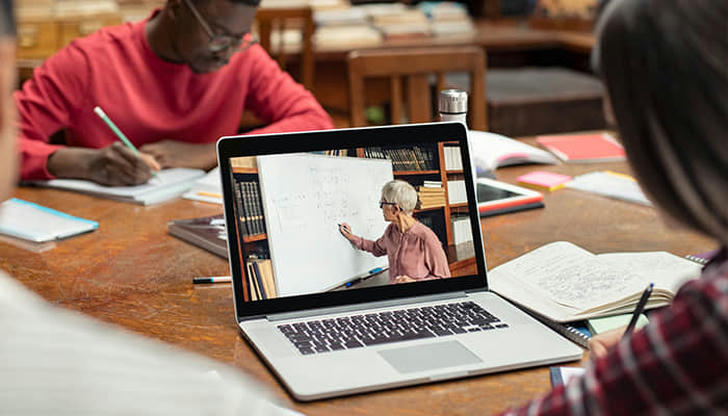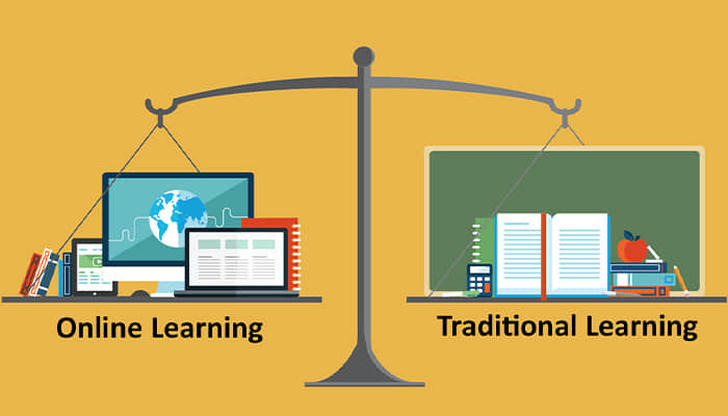Flexibility or Face Time? The Ultimate Showdown of Online vs. Traditional Learning
The question of online versus traditional learning continues to spark debate. Both approaches offer unique advantages and disadvantages, and the ideal choice depends on your individual learning style, preferences, and circumstances. Let’s delve into the ring and explore the strengths and weaknesses of each contender.

Traditional Learning: The Cornerstone of Education
Strengths
Structured Environment: Traditional classrooms provide a structured learning environment with a set schedule and routine. This predictability can benefit students who thrive on organization and clear expectations.
Face-to-Face Interaction: The physical classroom fosters a dynamic environment where students can engage directly with instructors and classmates. Real-time feedback allows professors to address questions and clarify concepts on the spot. Lively discussions spark critical thinking and a deeper understanding of the material. Furthermore, group projects and collaborative activities cultivate strong interpersonal skills.
Hands-on Learning: Traditional learning often incorporates hands-on activities, labs, and group projects, which can be particularly effective for kinesthetic and social learners who benefit from practical application. The opportunity to learn by doing fosters a deeper engagement with the material and creates lasting memories that enhance understanding.
Campus Life and Community: Traditional learning extends beyond the classroom walls, offering the unique and enriching experience of campus life. Students become part of a vibrant community, where they can participate in a variety of extracurricular activities, which not only provide opportunities to explore interests and develop talents, but also foster the creation of lifelong friendships and a strong sense of belonging.
Weaknesses
Limited Flexibility: Traditional class schedules can be inflexible, making it challenging for students with work commitments or family obligations. The fixed location can also be inconvenient for those who live far from campus.
Passive Learning Style: Traditional classes can favor a passive learning style, where students absorb information rather than actively engage with the material. This may not be suitable for all learners.
Limited Pace Options: The curriculum typically progresses at a set pace, which can be frustrating for advanced learners or leave struggling students behind.

Online Learning: The Virtual Classroom
Strengths
Flexibility and Convenience: Gone are the rigid constraints of traditional class schedules. Online learning empowers you to embrace education on your own terms. Course materials and lectures are readily available at your fingertips, allowing you to learn at a pace that aligns with your existing commitments. This is ideal for working professionals, parents, or those living in remote locations.
Self-Directed Learning: Online courses usher in a new era of self-directed learning. The onus falls on you to manage your time effectively, prioritize tasks, and stay organized. This approach not only cultivates responsibility and independence but also improves your time management and organizational skills which will serve you well not only in your academic pursuits but also in your future professional endeavors.
Variety of Learning Materials: Online courses transcend the limitations of traditional textbooks and lectures. They leverage the power of technology to create a dynamic and engaging learning experience. Whether you’re a kinesthetic, visual, or auditory learner, there’s something for you. This rich tapestry of learning materials ensures there’s something for everyone, maximizing engagement and comprehension.
Wider Course Selection: The virtual world of online learning shatters geographical limitations. Online platforms offer a vast and ever-expanding course catalog, encompassing a kaleidoscope of subjects that are just a click away. This unprecedented access to a wider course selection empowers you to explore your academic passions and delve into specialized fields that might not be available traditionally.
Weaknesses
Limited Interaction: The virtual nature of online learning can lead to feelings of isolation and a lack of interaction with instructors and classmates. Building relationships and fostering a sense of community can be more challenging.
Requires Self-Discipline: The flexibility of online learning can be a double-edged sword. Students need strong self-discipline and time management skills to stay on track and avoid procrastination.
Technical Dependence: Online learning relies heavily on technology. Reliable internet access and a working computer are essential, and technical difficulties can disrupt the learning process.
Potential for Distraction: The online environment can be filled with distractions, making it challenging for some students to stay focused compared to a traditional classroom setting.

The Ultimate Showdown: It’s Not About Either/Or
Ultimately, the choice between online and traditional learning isn’t about a knockout blow--it’s about finding the right fit for you. Consider your learning style, lifestyle, and academic goals. Some students may excel in a structured, traditional classroom environment, while others may thrive in the flexibility and self-directed nature of online learning. The good news? The educational landscape is evolving, and blended learning models are becoming increasingly popular. These programs combine elements of both traditional and online learning, offering the best of both worlds.
So, the next time you consider your educational path, don’t be limited by traditional thinking. Explore both online and traditional options, and choose the approach that empowers you to achieve your academic aspirations. Remember, the most important factor is to find a learning environment where you feel engaged, supported, and empowered to succeed.
